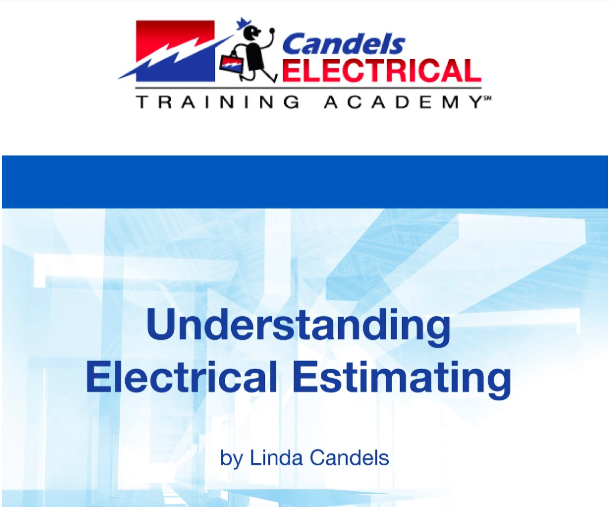Construction Bid Process: Our estimating process has now taken us to the point where we are ready to submit the bid.
- Our take-off is complete and checked for accuracy
- We applied labor adjustments
- We included and reviewed our quotes
- A detailed scope or proposal letter is written to support our price
There are two bidding situations that are likely to occur: either a public bid opening or a private bid.
Public Bid Process

If your job is a publicly-funded project, it will be a public bid opening at a specified place and time meaning your are bidding “plans and specs” and usually no exclusions can be taken. In a public bid situation, you might be bidding as a prime or a sub, depending on how the job is being put together. In other words, you might be bidding on the electrical bid package or you may be submitting your electrical price to a general contractor who will be bidding as the prime. In either scenario, you typically do not get a second chance. The low number wins the job, precluding any problems in the scope review, which we will discuss later.
Private Bid Process
For privately-funded projects, the bid process is quite a bit different. You prepare your proposal the same way, but what happens when you submit your price is anyone’s game. Again, you may be bidding as the prime contractor or as a subcontractor to a general contractor or construction manager. And there is a careful strategy about to whom you submit your price, when you submit it, and the numbers you actually submit.
For example, if you have a good working relationship with a general contractor, you will probably give him a better price than someone with whom you have never worked. Even if you have worked with a contractor before, please be careful about submitting your price too early! By doing so, you make yourself a “target,” or that “number to beat.” If you get hounded for a number early, you may want to respond with something vague like, “I am think around $1 million; does that number look in the ballpark?”
Ask the GC for Feedback
Based on the feedback you get, you may have some inside information about how your bid number actually looks. Although you will have a specified date and time at which the bids are due, unlike a public bid opening, your numbers will not be read in public, and oddly enough, the low bidder may not actually be awarded the job.
How could this happen, you might ask. Well, simply, the answer is negotiation.
Before a job is awarded, the entity who has solicited the proposals will conduct scope reviews, typically with the three lowest bidders. During this process, the plans and specs are reviewed, and you will be asked whether or not you covered certain items in your scope of work. This process helps “level” the playing field and determine whether the low bidders actually covered the specified scope of work. In a private bid situation, you can “exclude” items from your bid, unlike the public bid opening arena.
During the scope review, you will have a chance to clarify why you included or excluded an item, and subsequently you may be requested to add something to your bid based on the outcome of your scope review.
“What can I do to get the job off the street today?”
There can be a lot of game playing in the bid process. The general contractor may tell you that “your price is in the mix, but someone else is lower.” In these situations, there are a number of strategies you can employ.
The one we recommend is the direct sales approach. Ask the question, “what do I have to do to get this job off the street today?” Remember, the idea is to actually close the deal! At the same time, I would caution you:
- Never chase someone else’s number unless you are sure you can do the job for that price.
- You should always complete a detailed take-off before you bid any job so that you know your costs.
- Never bid a job below your cost, thinking you are going to make it up in change orders. Although change orders still are issued on jobs, the economy is not like the “good ol’ days” when the value of the change orders often exceeded the original contract value.
- Sometimes there are bidders that put out an extremely low number. Once this bid is submitted, it now becomes the number to beat because let’s face it, everyone wants to put as much money in their pocket as possible. Again, this is a dangerous situation. The general contractor will want to buy the job for this price, yet, this low number probably was not based on a take-off, and if it was, something was undoubtedly “missed.” This may be a tough situation to combat, and again, don’t chase someone else’s number unless you can do the job for that price.
Sell your Strengths!
However, if you are privy to information about that low bidder that may affect his job performance, then by all means, sell your bid with your company strengths versus your competition. As they say, “it ain’t over, ‘til it’s over.” As with most things, persistence is key. Never give up unless you know the job is really gone.
The next and final article will summarize everything and give you some thoughts to ponder.




 A new electrical estimating book hits the press! Candels Estimating introduces its first e-book:
A new electrical estimating book hits the press! Candels Estimating introduces its first e-book: 




 An increasing number of women-owned contracting firms are helping to level the playing field in a traditionally male-dominated industry.
An increasing number of women-owned contracting firms are helping to level the playing field in a traditionally male-dominated industry.



 When do you think the estimating process begins? This article is the first of a 12-part series on the estimating process. In starting the New Year, it is appropriate to examine the processes we complete but might not give much thought to, such as estimating.
When do you think the estimating process begins? This article is the first of a 12-part series on the estimating process. In starting the New Year, it is appropriate to examine the processes we complete but might not give much thought to, such as estimating.